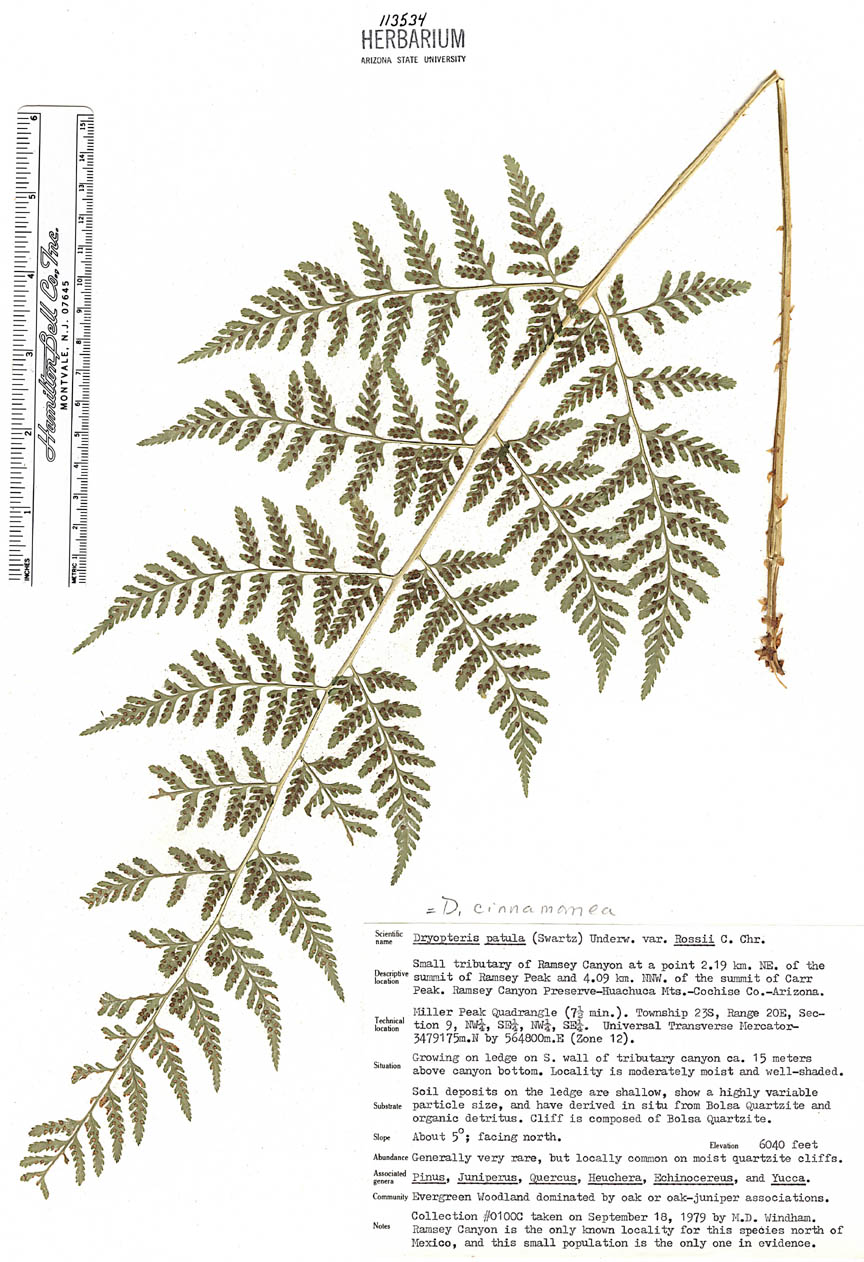Dryopteris
|
Family: Dryopteridaceae |
Plants terrestrial, rarely on rock. Stems short-creeping to erect, stolons absent. Leaves monomorphic, green through winter or dying back in winter. Petiole ca. 1/4--2/3 blade length, bases swollen or not; vascular bundles more than 3, arranged in an arc, ± round in cross section. Blade deltate-ovate to lanceolate, 1--3-pinnate-pinnatifid, gradually reduced distally to pinnatifid apex, herbaceous to somewhat leathery. Pinnae not articulate to rachis, segment margins entire, crenate, or serrate, spinulose or not; proximal pinnae reduced (several pairs), same size as or enlarged relative to more distal pinnae, sessile to petiolulate, equilateral or often inequilateral with pinnules on basiscopic side longer than those on acroscopic side; costae adaxially grooved, grooves continuous from rachis to costae to costules; indument of linear to ovate scales abaxially, also sometimes with glands, blades ± glabrous adaxially. Veins free, forked. Sori in 1 row between margin and midrib, round; indusia round-reniform, attached at narrow sinus, persistent or caducous. Spores brownish, coarsely rugose or with folded wings. x = 41. The relationships of the North American species are reasonably well understood, but species identifications are complicated by the frequent presence of hybrids in field populations. Sterile hybrids can be distinguished from fertile species by their misshapen spores and intermediate morphology. They are not included in the key, but they may be identified as to parentage by combinations of characters in the key (e.g., marginal sori for Dryopteris marginalis , narrow blades for D . cristata ). Relationships are shown in the accompanying reticulogram.
Petiole stout, stramineous or green, with 3-7 free bundles, beset with chaffy scales, especially toward the base; blade pinnate-pinnatifid to tripinnate-pinnatifid, sometimes beset with flattened or hair-like, multicellular scales, otherwise glabrous or merely glandular, the minor axes decurrent on the major ones, the ridges on the upper side of the rachis not raised above the level of insertion of the costae; veins free, mostly ending a little short of the margin in elongate hydathodes; sori roundish, intramarginal (or nearly marginal) on the veins; indusium well developed, persistent, reniform or horseshoe-shaped, glabrous or sometimes glandular; mostly medium-sized to rather large mesophytic ferns with dark green, often evergreen lvs, the rhizomes short, stout, erect or shortly creeping, scaly and commonly covered with old petiole-bases, the lvs tufted, often in a vase-like configuration; x=41, at least for European and temperate American spp. 150, cosmop.
Our spp. produce frequent sterile hybrids and also enter into a polyploid complex. The following names are believed to apply to hybrids, as indicated: Gleason, Henry A. & Cronquist, Arthur J. 1991. Manual of vascular plants of northeastern United States and adjacent Canada. lxxv + 910 pp. ©The New York Botanical Garden. All rights reserved. Used by permission. |

